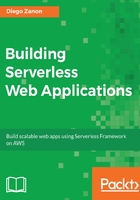
Small e-commerce websites
In this section, I've used the qualifier small. This is because there are many studies that correlate the time to load a page with the probability for the customer to buy something. A few tens of milliseconds later may result in loss of sales. As already discussed, serverless brings reduced costs, but the cold start delay may increase the time to render a page. User-facing applications must consider whether this additional delay is worth it.
If the e-commerce sells to a small niche of customers in a single country, it's very likely that the traffic is concentrated during the day and reduces to almost nothing at late night. This use case is a perfect fit for serverless. Infrequent access is where most of the savings happens.
A real story to back this use case was described on Reddit. Betabrand, a retail clothing company, made a partnership with Valve to sell some products to promote one game. Valve created a blog post to advertise the deal and after a few minutes, the website broke because it couldn't handle the instant peak of a massive number of users. Valve pulled out the post and Betabrand had the mission to improve their infrastructure in one weekend.
Betabrand solved the problem building a small website using serverless. Valve advertised them again and they were able to handle 500,000 users in 24 hours, with peaks of 5,000 concurrent users. The post starts saying that it had an initial cost of only US$ 0.07, but it was corrected in comments to US$ 4.00 for backend and US$ 80.00 to transfer large (non-optimized) images, which is still an impressive low cost for such a high traffic (source: https://www.reddit.com/r/webdev/3oiilb).